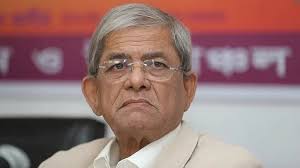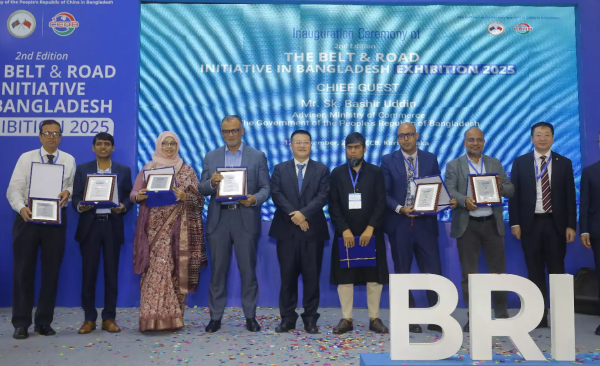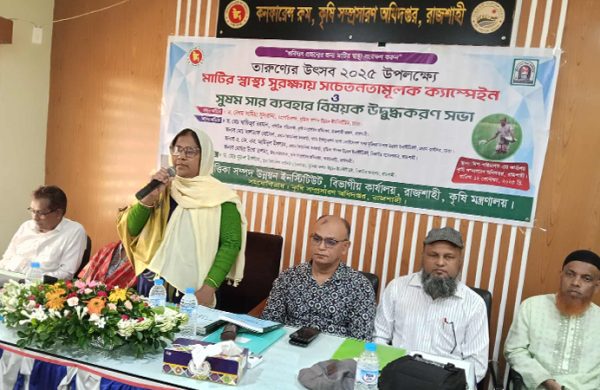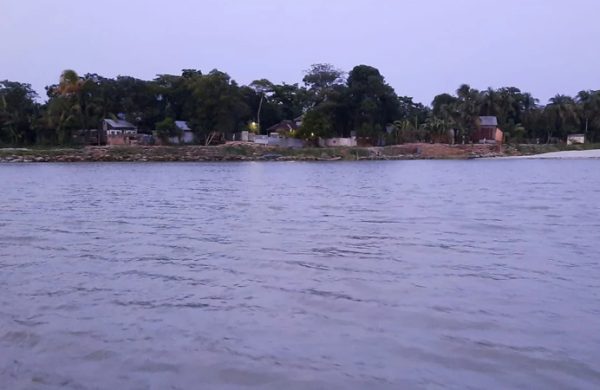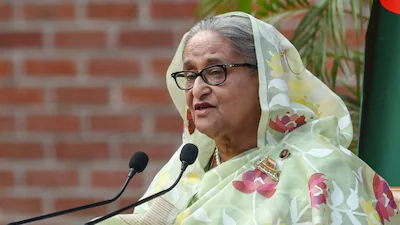Policy Inconsistency and Trade Competitiveness
- Update Time : Friday, September 12, 2025

—Dr AKM Asaduzzaman Patwary—
Trade and investment are critical drivers of any economy, and Bangladesh is no exception. Like other emerging economies, the country faces common challenges such as external shocks, loss of preferential treatment, and weak competitiveness. International trade plays a particularly vital role, contributing 12–13% of GDP. In FY25, exports reached USD 55 billion and rose further to USD 63 billion in FY26, with a target of USD 110 billion set for FY27. Exports account for about 15% of GDP, while imports, valued between USD 70 and 80 billion, make up roughly 20%. However, despite this significance, the full potential of trade remains underutilised, largely because our major trade policies mainly export and import policy, tariff and industrial policies operate in silos rather than in harmony.
Despite the huge importance of trade, Bangladesh’s trade-related policies reveal significant anomalies and lack of synchronisation. Export growth is not adequately supported by import frameworks, while incentives such as cash subsidies are issued ad hoc through circulars, leaving exporters uncertain about long-term planning. At the same time, frequent Bangladesh Bank circulars on LCs and foreign exchange, including the phasing out of the Letter of Credit Authorisation Form (LCAF), disrupt businesses, particularly CMSMEs that already struggle with liquidity and main spirit of import policy. While the Export Policy talks of shifting toward WTO-compliant and import substitute export-oriented industrialisation, there is no clear post-LDC roadmap for transitioning to R&D support, tax credits, or sectoral planning, support plans and other mapping to enhance and promote the export diversification.
The Import Policy Order (IPO) 2021–2024 further exposes structural inconsistencies. Instead of supporting exports, it imposes procedural burdens such as back-to-back LCs, returnable permits and bank guarantees, discouraging temporary imports and re-exports that could stimulate production. Rigid value addition requirements for entrepôt trade and reexport value addition criteria also contradict global WTO practices, limiting Bangladesh’s potential as a regional hub. Making matters worse, the IPO was issued three years late and only in Bangla, creating both regulatory vacuums and misinterpretation risks for international stakeholders. Each of these anomalies stems not from weak intentions but from policies designed in isolation, without considering their interdependence with export promotion.
Tariff policy also suffers from similar inconsistencies. Instead of rules-based stability, trade taxation is dominated by para-tariffs such as Supplementary Duty (SD) and Regulatory Duty (RD), which are adjusted abruptly through SROs. This undermines the predictability that investors and exporters require to make decisions. Although the National Tariff Policy 2023 pledged to ensure stability, discretionary adjustments continue to dominate in practice, showing the gap between policy commitments and implementation. Likewise, industrial policy does not align with export priorities. Classifications such as “thrust,” “high priority,” or “controlled” are not harmonised, so sectors emphasised in Industry Policy 2022, such as manpower export, shipbuilding and handicrafts, are not the same as thrust sectors under export policy. Sectors termed as export diversification in Industry policy like RMG, leather, manmade and accessories and priority sectors like foreign employment and tourism and ship building are not endorsed in the export sectors in the export policy alone. Thus, the shift in sector selection and priorities affect the optimum resource allocation and attention of Government in policy spheres.
The effects of this fragmentation are evident in broader trade and investment outcomes. Export targets lack competitiveness analysis, and the Smooth Transition Strategy identifies over 1,000 products for diversification, most of which are uncompetitive and have very low potentials to secure the mainstreamed export markets. The STS is termed as a game-changing evidence and roadmap for post-LDC economic transformation and good position in the Economic Vulnerability Index score relies on export diversification. The planned diversification, required policy support and synchronisation among relevant trade policies are missing within the transformational framework. The absence of a comprehensive industrial database, particularly for CMSMEs, hampers evidence-based policymaking, while thousands of SMEs have disappeared without proper documentation. Outdated foreign exchange rules, energy shortage, high costs, and infrastructure bottlenecks further reduce trade competitiveness. Therefore, to harness the trade potentials of Bangladesh, the core trade supportive policies including Foreign Exchange Regulation Act, Import and Export Control Act, and Customs Act need to be aligned with future trade perspective of Bangladesh.
To address these challenges, Bangladesh must focus on harmonising trade, tariff, import and industrial policies. Sector classifications such as “priority” or “thrust” should be aligned across frameworks, and implementing agencies should be reassessed and strengthened through broader public–private consultation. Incentives must gradually shift from ad hoc cash subsidies to WTO-compliant measures such as R&D support, export insurance, tax credits, and skill development programmes. Export promotion should also move beyond traditional markets in the USA and EU, extending targeted regulatory and financial support to regional, African and Asian markets.
Moreover, reforming the IPO is equally vital. Procedural barriers, including bank guarantees, returnable permits and back-to-back LCs should be replaced by risk-based or self-declaration frameworks. Value addition requirements and packaging rules should be withdrawn, while IPOs must be bilingual, timely, and standardised with eight-digit HS codes, with forward-looking provisions for FTAs, PTAs and WTO alignment. At the same time, tariff and fiscal policies must move away from SRO-driven para-tariffs to a predictable, rules-based framework.
Institutional coherence is essential for ensuring that Bangladesh’s trade policies operate in harmony; without strong, well-coordinated institutions, even the most carefully designed export, import, tariff and industrial policies cannot deliver predictable and sustainable outcomes. The Bangladesh Single Window (BSW) should be fully operationalised, and investment facilitation streamlined through a unified One Stop Service integrating BIDA, BEZA, BEPZA and BHTPA with the BSW. A national industrial database should guide evidence-based policymaking, particularly for MSMEs. The overall regulatory climate must be modernised, friendly and result-oriented that actively support our trade and trade-oriented investment spree.
Once again, these issues all stem from policies that are designed in isolation rather than as an integrated, coherent framework. Thus, the bottom line is we must eliminate the anomalies of trade and other supporting policies, such as industrial, foreign, tariff and income tax policies, to facilitate trade. Bangladesh should adopt a comprehensive foreign trade policy integrating both export and import frameworks under a single umbrella, following the model and learning of successful and neighbouring economies. The forward-looking policy regime would reduce overlaps, clarify regulations, and provide a predictable environment for businesses. With greater harmony, consistent leadership, and transparent regulation, Bangladesh can enhance trade competitiveness, diversify and achieve sustainable trade growth in the near future.
——————————————————–
The writer is a macroeconomic and policy researcher











